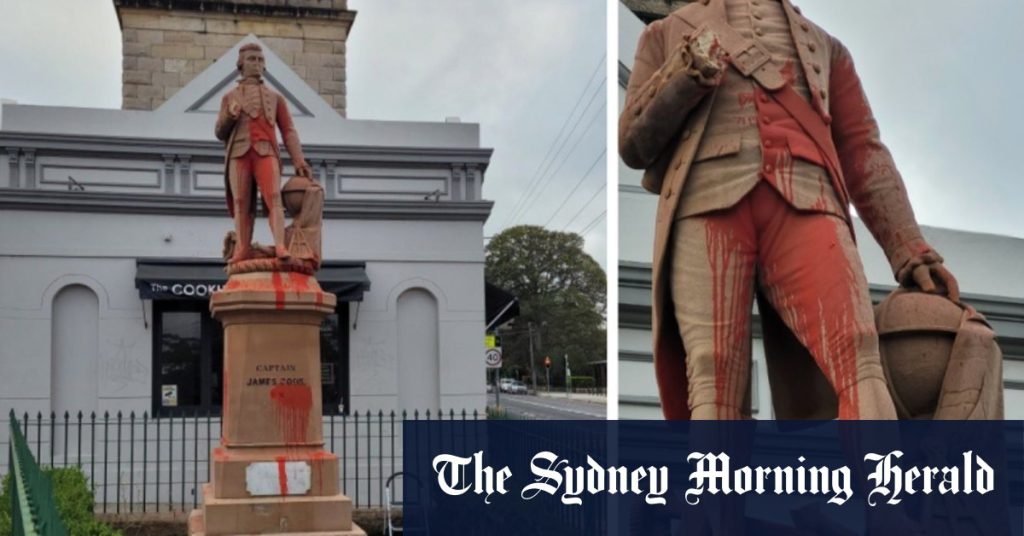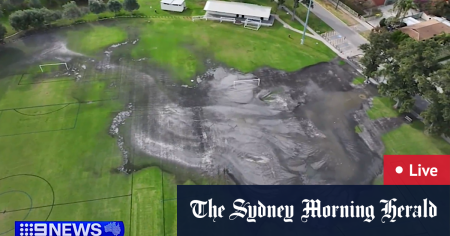The statue of Captain James Cook located on Belmore Road in Randwick, Sydney, has once again become the target of vandalism, just days before the Australia Day weekend. This marks the second such incident in the past twelve months and the third instance of defacement in recent years. The statue, which commemorates the explorer’s landing in Australia in 1770, has been a subject of controversy due to its association with colonialism and its impact on Indigenous Australians.
On Friday morning, Randwick City councillor Dr Carolyn Martin reported the extent of the damage to 2GB radio host Ben Fordham, describing the statue as an “absolute mess.” Vandals had splashed red paint across the monument, dislodged Cook’s hand, and damaged his nose and part of his face. Evidence at the scene suggested the perpetrators had used a stepladder to scale the protective fence surrounding the statue, which they then abandoned. Councillor Martin expressed outrage at the “disgraceful behaviour,” echoing the sentiments of many in the community who view the vandalism as an act of disrespect.
NSW Police responded to the scene around 8:30 am, initiating an investigation into the incident. Randwick Council workers were promptly dispatched to assess the damage and begin the process of restoration. This is not the first time the council has had to undertake repairs to the statue. In February 2022, the same statue was targeted with red paint, requiring the expertise of heritage stone specialists to restore it to its original condition. The recurrence of these acts of vandalism underscores the ongoing debate surrounding historical monuments and their place in a changing social landscape.
The history of vandalism targeting the Captain Cook statue reflects the complex emotions surrounding his legacy. In 2020, the monument was defaced with black spray paint, bearing the inscription “no pride in genocide” and an outline of the Aboriginal flag. This act highlighted the perspective of many Indigenous Australians and their supporters who view Cook’s arrival as the beginning of a period of dispossession and oppression. The repeated targeting of this specific statue suggests that it has become a focal point for expressing grievances related to historical injustices and the ongoing struggle for reconciliation.
The defacement of the Captain Cook statue is part of a broader conversation about how societies grapple with their historical past, particularly in relation to colonialism and its impact on indigenous populations. Similar incidents have occurred around the world, with statues and monuments representing controversial historical figures becoming targets of protest and vandalism. The debate centers around the question of which historical figures deserve commemoration and how their legacies should be interpreted in light of contemporary values and understanding. Some argue that these monuments represent an important part of history and should be preserved, while others believe they perpetuate harmful narratives and should be removed or recontextualized.
The incident in Randwick underscores the challenges of navigating these complex historical narratives in the public sphere. The act of vandalism, while condemned by many, also serves as a reminder of the unresolved tensions surrounding Australia’s colonial past and the ongoing process of reconciliation with its Indigenous peoples. The repeated targeting of the Captain Cook statue suggests a need for deeper engagement with these issues and a more inclusive approach to commemorating history that acknowledges the perspectives of all affected communities. As Australia approaches its national day, the vandalized statue stands as a stark symbol of the ongoing debate about the nation’s identity and its reconciliation journey.










